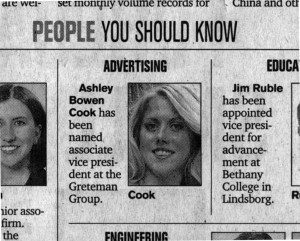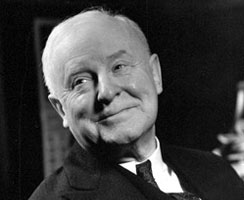Bart and Copy
How We Do That Thing We Do
“1st Principle: Nobody Likes Advertising.” Puzzled looks filled the classroom when I put up that slide. I was in Eric Wilson’s advertising copywriting class at WSU’s Elliott School recently, speaking about, as you might suspect, writing copy. This is a great exercise for a copywriter, having to figure out how you do what you do so that you can teach it. In the academic study of a creative discipline (not an oxymoron, whatever you may think) your instruction manual’s issued to you on orientation day. And then you struggle to relate the principles to what it actually takes to create something out of nothing. At least that’s what I was going to tell Eric’s students. But I revised this. It’s never something out of nothing.
Good Headlines Don’t Come Sheep
A copywriter’s never working with a blank page. Nor is the audience working with a blank slate. We’re full of common experiences. And almost all advertising copy starts with something familiar. I showed the class this year’s Kansas State Fair campaign to make the point that even something as off the wall as “Sheep Thrills and Raving Bull” relies on familiarity with the common phrases and popular culture. Certainly, the advertising creative is always walking the line. How far you can stray from the commonplace and still have enough people connect with the reference? Hard to perfect that in a classroom, but it’s learn-able.
Listen to the Man With the Beard
So, I told the students my first principle of good copywriting is “Nobody Likes Advertising.” Just ask anybody at work. Do you watch TV commercials? Of course not. But you’ll overhear the same person in the break room repeating lines from “The Most Interesting Man in the World” Dos Equis spots. Because it doesn’t register as “advertising.” It’s a story, a character, a joke. It’s inside your head and your heart before you know it. Somewhere Aristotle is saying, “I told you so.” Because he described the phenomenon 2,400 years ago to his own students, and we’re still employing it.
The quality of the thinking in Eric’s classroom – their thinking, not mine – impressed and encouraged me. Clearly, I was being ironic with the “Nobody Likes Advertising” principle. But I’m pretty sure it got their attention, made them rethink and maybe convinced/informed/motivated them. And that’s how we do it.


